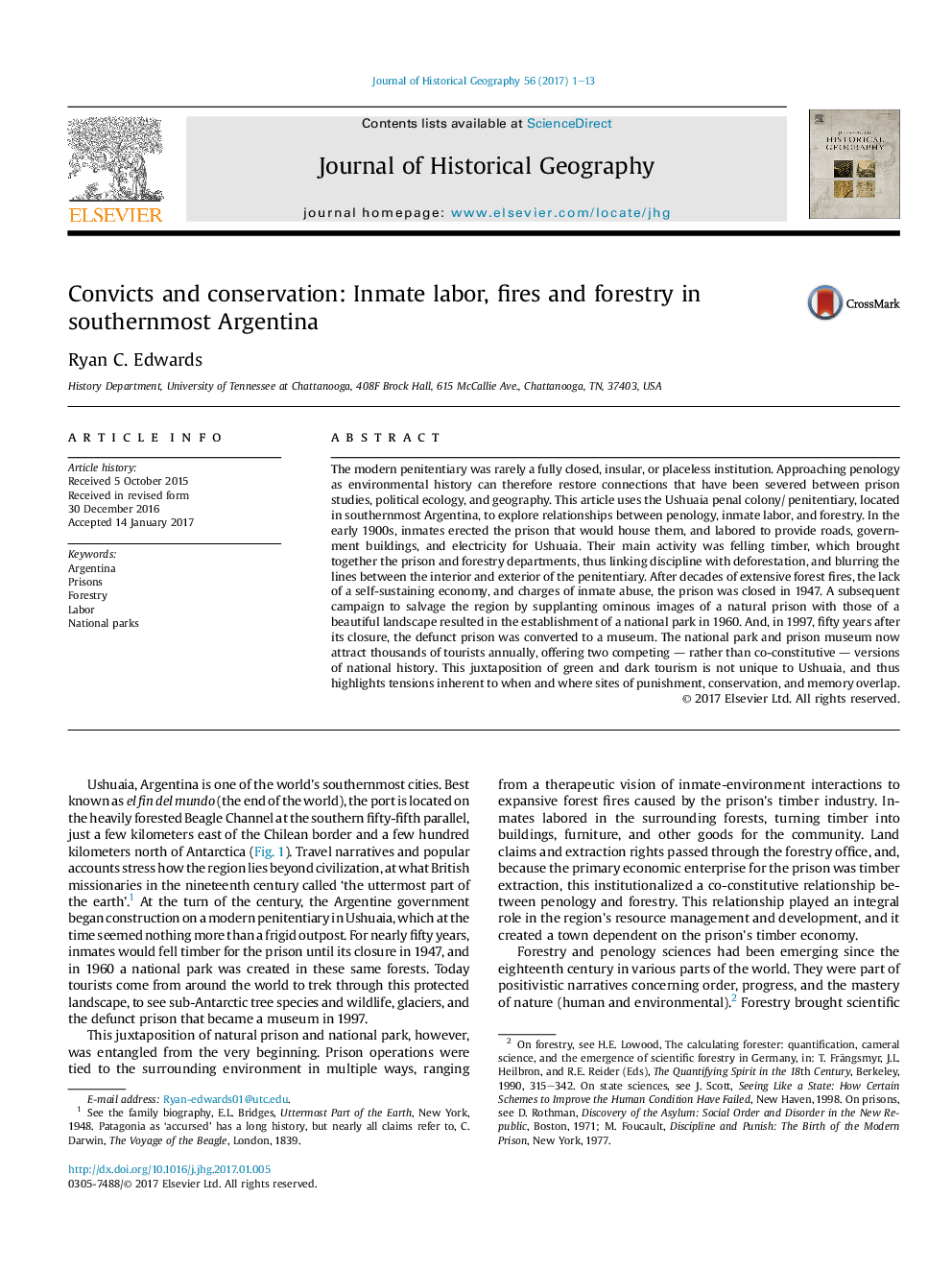| کد مقاله | کد نشریه | سال انتشار | مقاله انگلیسی | نسخه تمام متن |
|---|---|---|---|---|
| 5112862 | 1483969 | 2017 | 13 صفحه PDF | دانلود رایگان |
عنوان انگلیسی مقاله ISI
Convicts and conservation: inmate labor, fires and forestry in southernmost Argentina
ترجمه فارسی عنوان
محکوم و حفاظت: کار زندانی، آتش سوزی و جنگلداری در جنوب آرژانتین
دانلود مقاله + سفارش ترجمه
دانلود مقاله ISI انگلیسی
رایگان برای ایرانیان
کلمات کلیدی
آرژانتین، زندان جنگلداری، کار، پارک های ملی،
موضوعات مرتبط
علوم انسانی و اجتماعی
علوم انسانی و هنر
تاریخ
چکیده انگلیسی
The modern penitentiary was rarely a fully closed, insular, or placeless institution. Approaching penology as environmental history can therefore restore connections that have been severed between prison studies, political ecology, and geography. This article uses the Ushuaia penal colony/penitentiary, located in southernmost Argentina, to explore relationships between penology, inmate labor, and forestry. In the early 1900s, inmates erected the prison that would house them, and labored to provide roads, government buildings, and electricity for Ushuaia. Their main activity was felling timber, which brought together the prison and forestry departments, thus linking discipline with deforestation, and blurring the lines between the interior and exterior of the penitentiary. After decades of extensive forest fires, the lack of a self-sustaining economy, and charges of inmate abuse, the prison was closed in 1947. A subsequent campaign to salvage the region by supplanting ominous images of a natural prison with those of a beautiful landscape resulted in the establishment of a national park in 1960. And, in 1997, fifty years after its closure, the defunct prison was converted to a museum. The national park and prison museum now attract thousands of tourists annually, offering two competing - rather than co-constitutive - versions of national history. This juxtaposition of green and dark tourism is not unique to Ushuaia, and thus highlights tensions inherent to when and where sites of punishment, conservation, and memory overlap.
ناشر
Database: Elsevier - ScienceDirect (ساینس دایرکت)
Journal: Journal of Historical Geography - Volume 56, April 2017, Pages 1-13
Journal: Journal of Historical Geography - Volume 56, April 2017, Pages 1-13
نویسندگان
Ryan C. Edwards,
